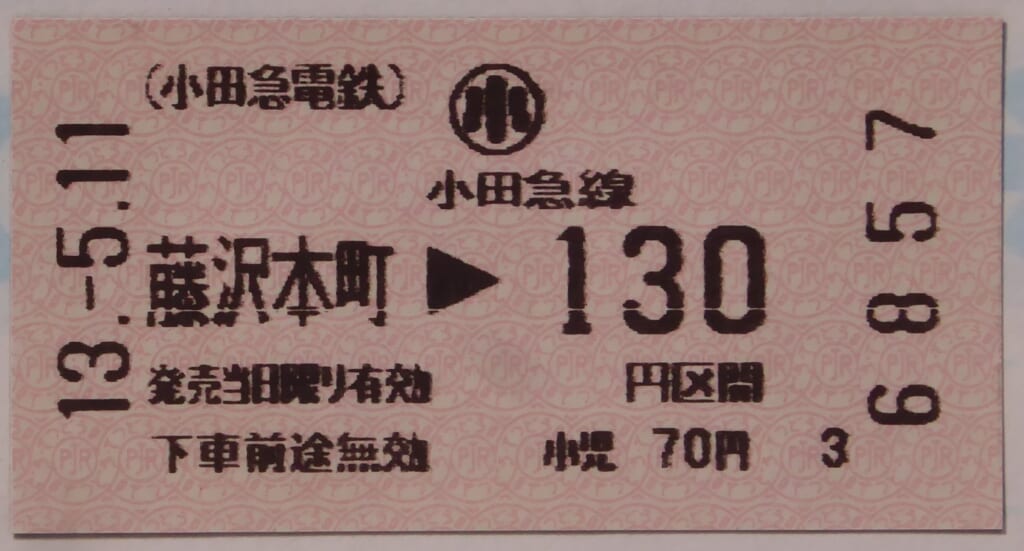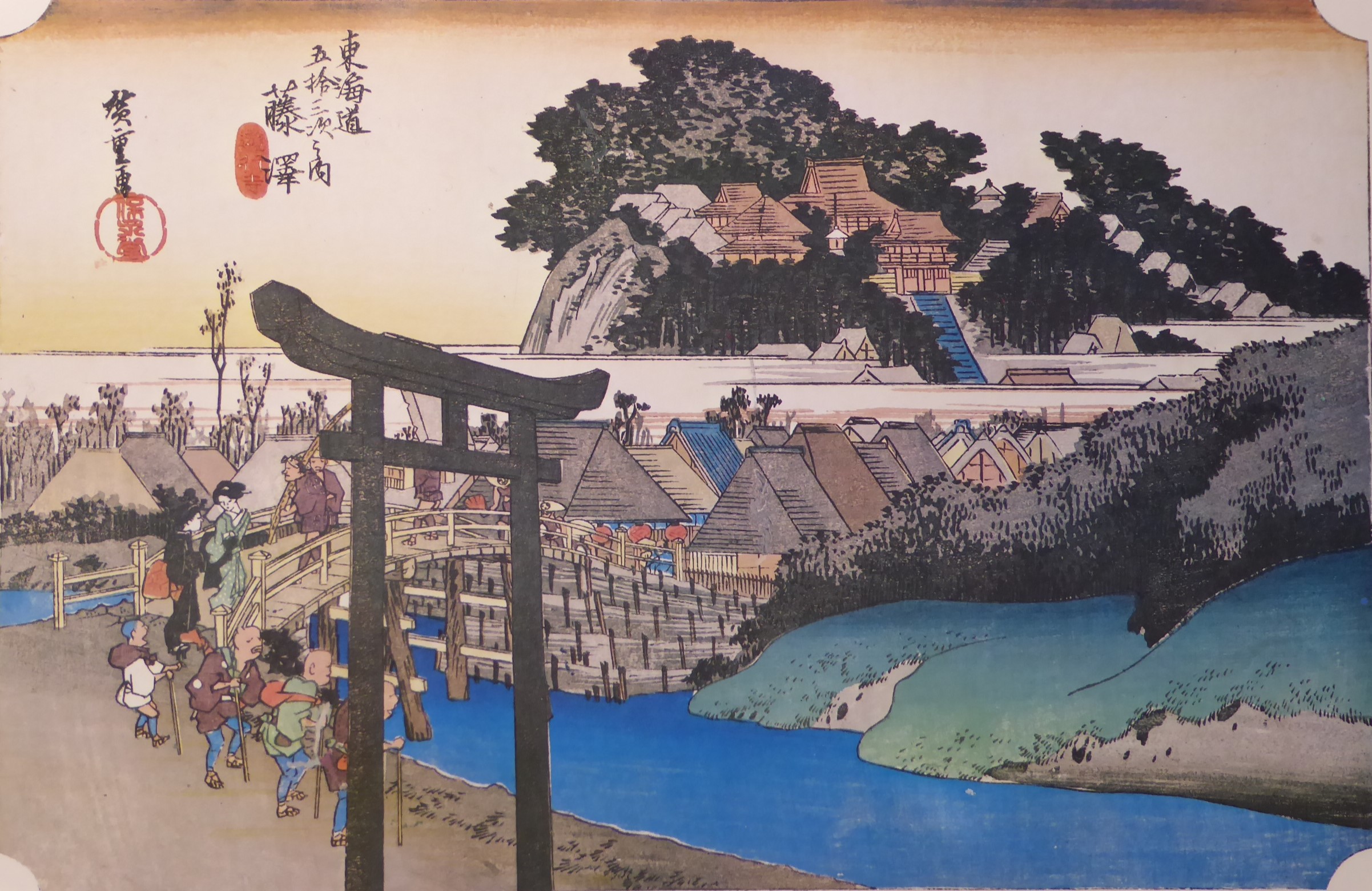Explanation of the Fifty-three Stations of the Tokaido 7 Fujisawa
13.7km from Hiratsuka to Fujisawa, 35°20′44.4″N 139°29′10.7″E
Fujisawa is the sixth of the Fifty-three Stations of the Tokaido.
Currently Fujisawa City, Kanagawa Prefecture.
It became a post station on the Tokaido in 1601.
Later, Totsuka and Kawasaki were added, making it the sixth post station on the Tokaido.
When the post station relay system was established on the Tokaido, Fujisawa was the first to be designated as a post station, along with Kanagawa, Hodogaya, Hiratsuka, Oiso, and Odawara.
Its geographical feature was that it was a place where many roads converged.
The Hachioji road (Takiyama Kaido) heads north.
The Kamakura road heads east in front of Yugyoji temple.
The Atsugi road heads northwest.
The Oyama Road (to Oyama Afuri Shrine and Oyama Fudoson) heads west.
The Enoshima Road (to Enoshima Shrine) heads south.
From the mid-Edo period onwards, as the junction of the Oyama Road and the Enoshima Road, it became a bustling base for travelers making pilgrimages to Oyama and Enoshima.
It flourished as a temple town for juokou-ji Temple (Yugyo-ji Temple).
During the Later Hojo period, it was the junction of the Odawara Kaido Road, which connected Odawara Castle with the Sakuradamon Gate of Edo Castle, its subsidiary castles, Hachioji Castle, and Tamanawa Castle.
There is the first torii gate of Enoshima Shrine, and on the right is the Enoshima Road, 4km away.
The row of houses in the inn from the Edo-facing mitsuke beside the east gate of Yugyoji Temple to the Kamigata-mitsuke in Daimachi was 1.3km long, and consisted of three towns from the Edo-facing side: Ogikocho, Okubocho, and Kidocho.
In 1843, it had four honjin , one wakihonjin , 45 hatato, and a population of 4,089.
It was a town in front of Yugyoji Temple, and a market was held on the 1st and 6th of each month.
The Honmachi Fire Station branch office is located on the south side of the road.
This is the center of the inn, and there are remains of a wholesale market.
Fujisawa Palace was the accommodation facility for the Tokugawa Shogunate.
It was located between the old Fujisawa Community Center and Fujisawa Municipal Hospital.
The palace was built in 1596, measuring 106 ken from east to west and 62ken from north to south.
The front gate was on the south side, and the back gate was on the east side.
It was used about 30 times by Tokugawa Ieyasu, Hidetada, and Iemitsu.
Today, place names such as Gotenbashi, Jinya-koji, Jinyabashi, Takajobashi, and Gotenbe Park remain.
Opened in April 2016, the Fujisawa-shuku Exchange Center of the Fujisawa City Tourism Association provides information on Fujisawa-shuku.
Currently, there are stations on the JR (Tokaido Line, Shonan-Shinjuku Line, Ueno-Tokyo Line), private railways (Odakyu, Sotetsu, Enoden), subway (Yokohama Municipal), and monorail (Shonan Monorail), making it highly convenient.
The population ratio is higher inland, farther from the sea than in other Shonan areas, with a population of about 440,000.
Shonan United BC is a professional basketball team whose hometowns are Fujisawa City, Chigasaki City, and Samukawa Town.
Founded in 2020, it is currently a member of the B3 League.
① “Hoeido version”
This is a view of Dojozaka (Yugyo-zaka), Sakai River, and the large torii gate of Enoshima Benten.
This area is called Togamihara.
Going down the hill, you will reach Fujisawa-juku.
Seijo-ji Temple (Yugyo-ji Temple) stands on top of a hill.
It is a grand and prestigious building with 49 buildings on one mountain.
The river flowing in the foreground is the Sakai River, and the bridge is the Fujisawa Bridge.
Four blind men heading for Enoshima are passing through the large torii gate of Shima Benten.
② “Gyousyo version”
A view of the Sakai River, Fujisawa Bridge, and the large torii gate.
On the left is Fujisawa Bridge, and flowing below is the Sakai River.
On the right is the large torii gate of Enoshima Benten.
The signpost near the torii gate reads “Enoshima Road.”
③ “Reisho version”
This depicts the nighttime scene at the junction of the Enoshima Road and the Tokaido Road.
This depicts the bustling nighttime scene of Fujisawa-juku.
The signpost near the torii gate reads “Enoshima Road.”
④ “Hokusai version”
This depicts Enoshima and Mt. Fuji. There is a large cow in the foreground.
This cow appears to be waiting to transport people and luggage to Enoshima.
⑤ “Travel image”
This is Odakyu Fujisawa Honmachi Station.
⑥ “Stamp image”
This is a ticket for Odakyu Fujisawa Honmachi Station.
Children’s fare is 70 yen.
Hoeido version
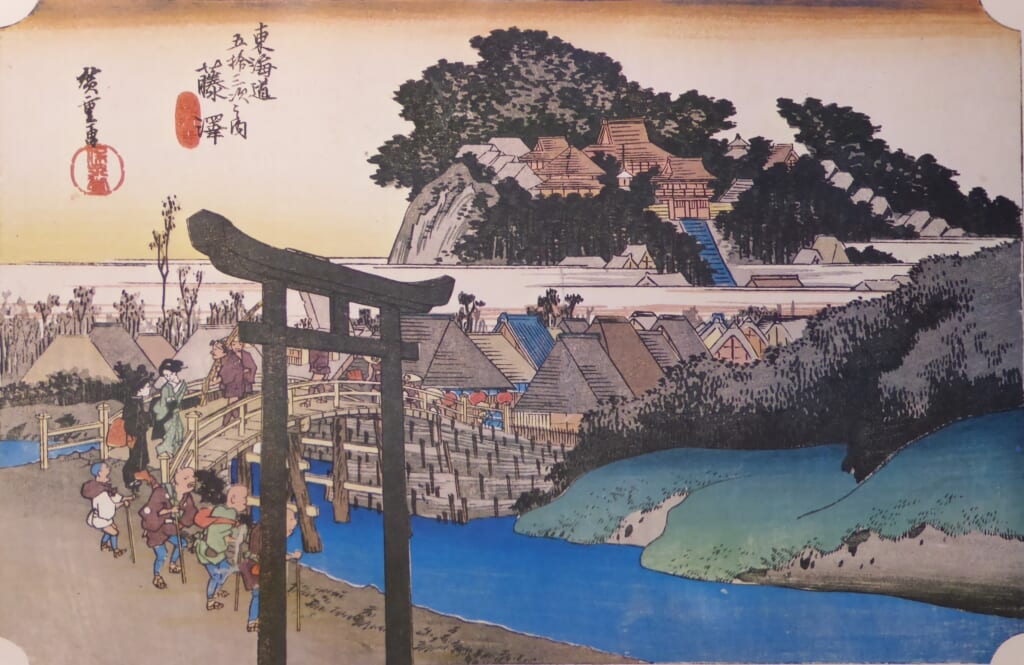
Gyousyo version
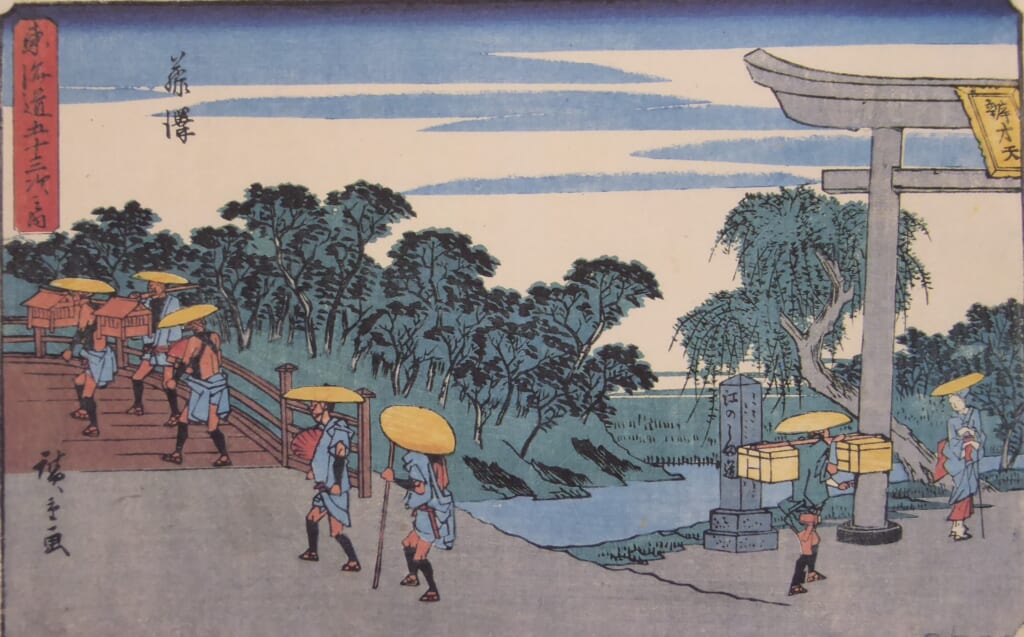
Reisho version
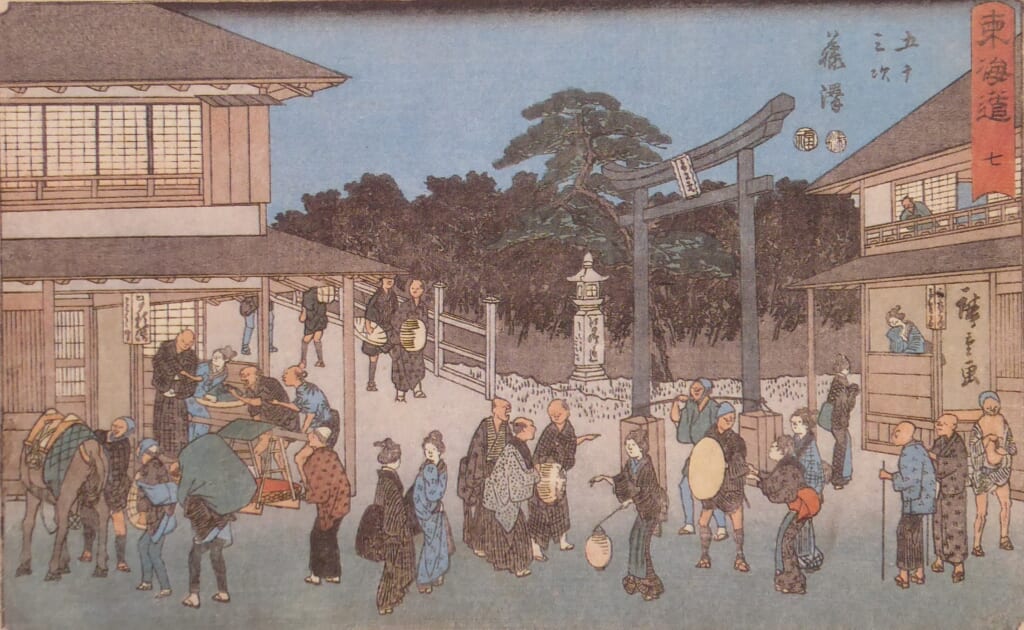
Hokusai version
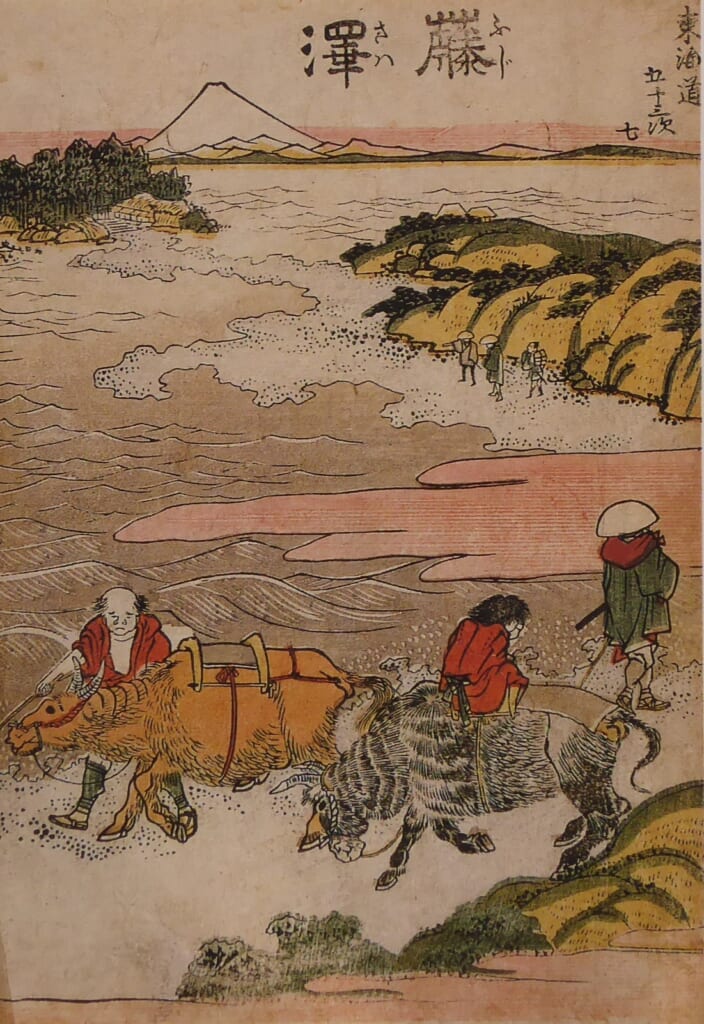
Travel image
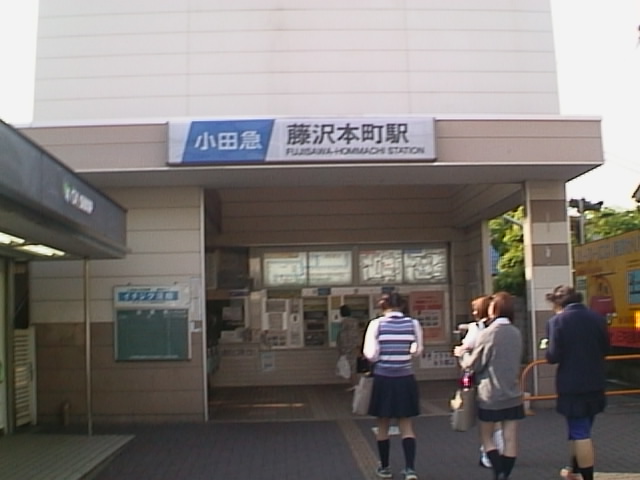
Stamp image
